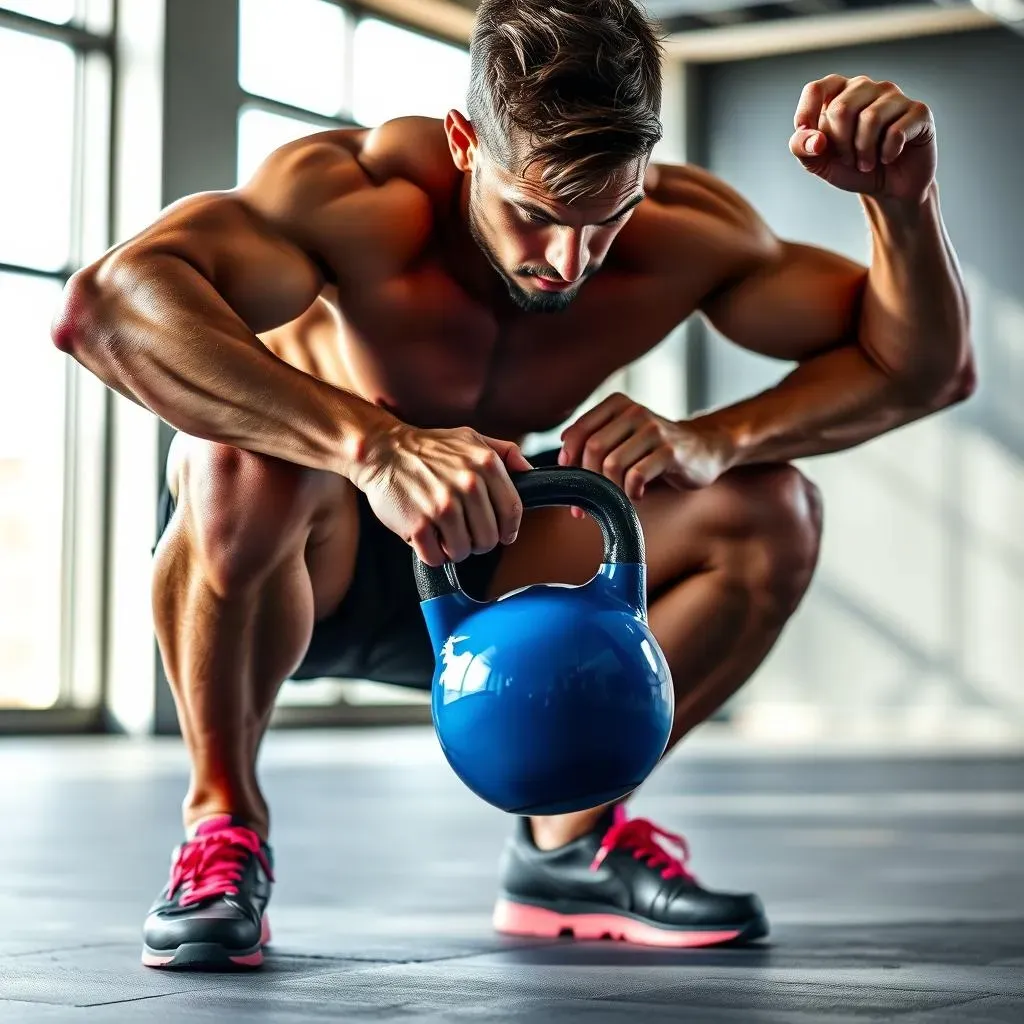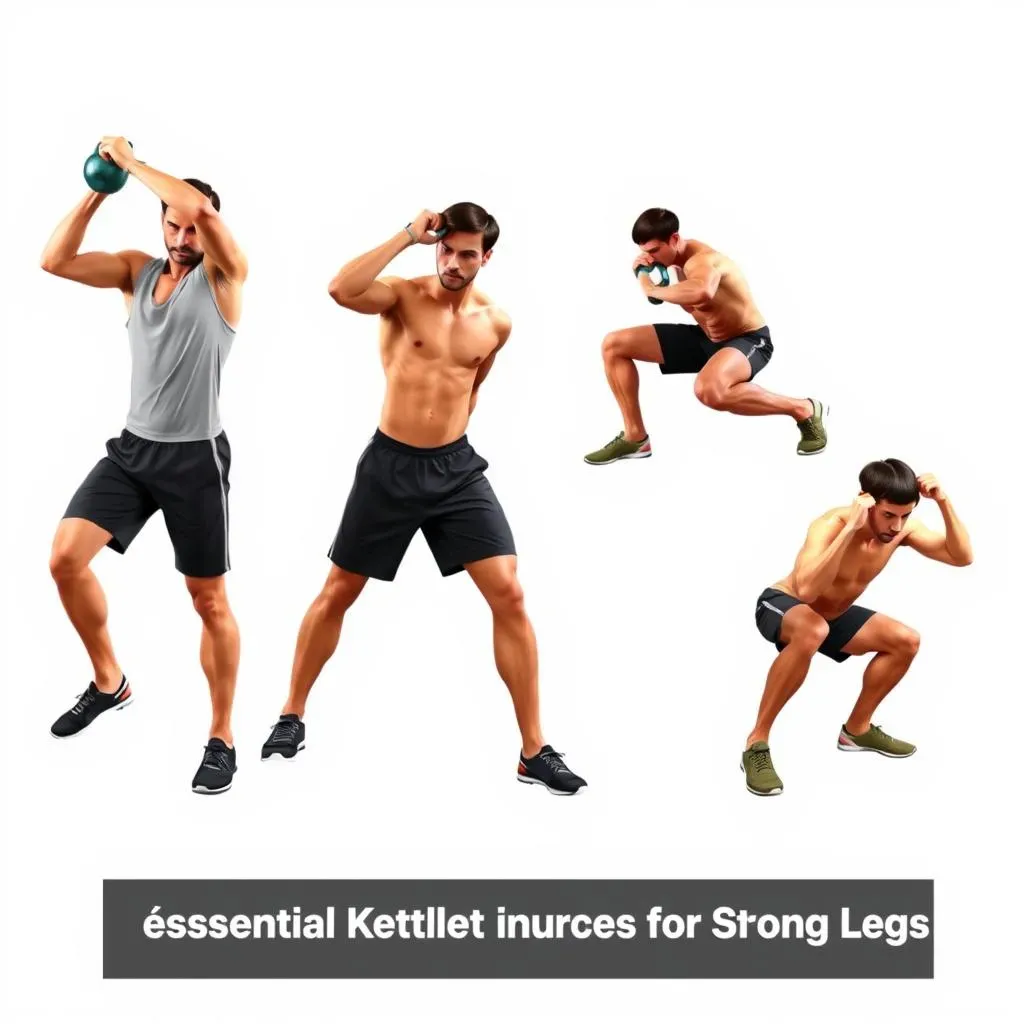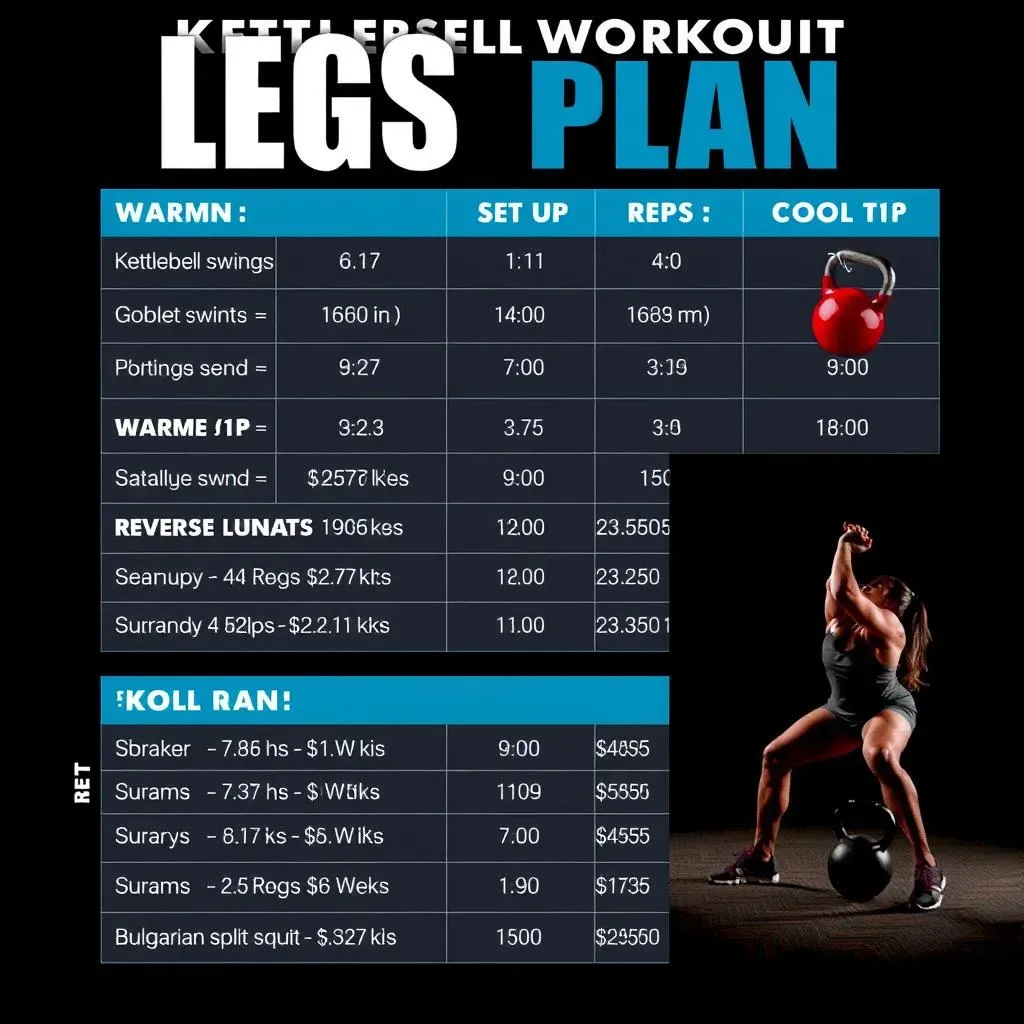Table of Contents
Ready to transform your leg day? Forget those boring machines; we're diving into the world of kettlebells! This isn't just another workout; it's a way to build serious strength, power, and even a bit of that "I-can-handle-anything" feeling. I'm not saying it'll be easy, but trust me, it'll be worth it. We'll start by talking about why kettlebells are so great for your legs, and hint, it's not just about looking good in shorts. Then, I'll show you some of my favorite exercises that'll make your quads, glutes, and hamstrings scream (in a good way, I promise). Finally, we'll put it all together with a simple workout plan so you can start your journey to stronger legs today. This article is all about showing you how a legs kettlebell workout can be a game-changer, no matter your fitness level. So, grab a kettlebell, or just imagine one for now, and let's get started!
Why Kettlebells Are Awesome for Leg Day

Why Kettlebells Are Awesome for Leg Day
Okay, so you're wondering why I'm so hyped about kettlebells for leg day, right? Well, it's simple: they're not just weights; they're like a whole new way to move. Think about it – a dumbbell is pretty straightforward, up and down, but a kettlebell? It's got that handle and that weight hanging off, which means your body has to work harder to control it. This does more than just build muscle, it also activates your core like crazy, and I mean crazy. Each swing, squat, and lunge becomes a full-body challenge. It's like you're not just lifting; you're learning to move with power and intention. Plus, they're just fun. There's something about swinging that heavy ball that makes you feel like a total badass.
Essential Kettlebell Exercises for Strong Legs

Essential Kettlebell Exercises for Strong Legs
The Mighty Swing
Alright, let's get into the good stuff – the actual moves. First up, we have the kettlebell swing. Now, I know what you might be thinking: "It's just swinging a weight." But trust me, this isn't your playground swing. This move is all about power from your hips, not your arms. It's a hinge, not a squat, so you're pushing your hips back and then exploding them forward. When you do it right, you'll feel it in your glutes and hamstrings like crazy. It's the foundation for so many other kettlebell moves, so getting this one down is key. It's like the secret handshake of the kettlebell world – once you master it, everything else falls into place. Don't be shy to start with a light weight to perfect the movement, the goal is to feel the muscles working.
Think of it like this: your body is a spring, you compress it back and then let it explode forward! It's not about lifting the kettlebell up with your arms, but rather using your hips to launch it. If you feel like you're doing a front raise with your arms, you might be doing it wrong. Try to imagine you are trying to send the kettlebell flying, but it is attached to your hands, that will create the right hip movement.
Squats and Lunges: The Classics, Reimagined
Next, we can't forget the classics: squats and lunges, but with a kettlebell twist. The goblet squat is a game-changer here. You hold the kettlebell close to your chest, which forces you to engage your core and keep your back straight. It also allows you to go deeper into the squat, hitting all those leg muscles from different angles. And, let's talk about lunges – they're not just about stepping forward anymore. Try the reverse lunge, holding the kettlebell in a rack position, that is, close to your chest. Or, if you are feeling adventurous, try the Bulgarian split squat, keeping your back leg elevated, it’ll test your balance and strength like nothing else. These variations add an extra challenge that'll make your legs stronger and more stable. It's not just about lifting; it's about control and stability.
These aren't just your average gym squats and lunges, the kettlebell adds a new dimension, it's like adding extra flavor to a dish. The goblet squat forces you to keep your chest up, which automatically helps you engage your core and get a deeper squat. The lunges with a kettlebell are no joke, the weight makes you work harder to stay balanced, which in return will make you stronger in ways you did not expect.
Exercise | Why it's Great | Muscles Worked |
|---|---|---|
Kettlebell Swing | Builds power, great for full body | Glutes, Hamstrings, Core |
Goblet Squat | Improves squat depth, core activation | Quads, Glutes, Core |
Reverse Lunge | Builds unilateral strength, balance | Quads, Glutes, Hamstrings |
Bulgarian Split Squat | Challenges balance, builds strength | Quads, Glutes, Hamstrings |
Putting It All Together: Your Legs Kettlebell Workout Plan

Putting It All Together: Your Legs Kettlebell Workout Plan
Building Your Workout
Okay, so you've got the moves down, but now how do you actually put them together into a workout? Don't worry, it's not rocket science. The key is to start simple and gradually increase the intensity. I like to start with a good warm-up, maybe some light cardio and dynamic stretching, just to get the blood flowing. Then, we jump right into the main workout. Pick 3-4 of the exercises we talked about, like swings, goblet squats, and reverse lunges. You can do each exercise for 3 sets of 10-12 reps, or you can do a circuit, where you perform each exercise one after the other, with little to no rest, then you rest at the end of the circuit. You can repeat that circuit 2-3 times. The goal here is to work hard but also maintain good form. It's better to do fewer reps with perfect form than a bunch of sloppy ones.
Remember, consistency is key. It's better to workout 2-3 times a week consistently, than to try to workout every day and burn out after a week. The important part is to listen to your body. If you are feeling tired, take a rest day, you do not need to push too hard. Also, make sure you are eating enough protein, that is the building block of muscles, you cannot build muscles if you do not give your body enough protein. Make sure you are also getting enough sleep, muscle grows when you rest. If you follow these tips, you will be building muscles in no time.
Sample Workout Routine
Alright, let's make this real. Here's a sample workout plan you can try. Remember, this is just a suggestion, feel free to adjust it based on your fitness level. Start with a 5-minute warm-up, such as jumping jacks and leg swings. Then, perform 3 rounds of the following circuit: 10 kettlebell swings, 10 goblet squats, 10 reverse lunges per leg, and 8 Bulgarian split squats per leg. Take 1 minute of rest after each round. Finish with a 5-minute cool-down, including static stretches for your quads, hamstrings, and glutes. This workout should take you around 20-30 minutes, and you'll definitely feel it afterwards. As you get stronger, you can increase the number of rounds, the number of reps, or try using a heavier kettlebell. The goal is to keep challenging yourself, but also to stay safe and enjoy the process.
Think of this workout as a starting point. As you get more comfortable, you can experiment with different exercises, sets, and reps. Maybe you want to add some single-leg deadlifts, or try doing some jump squats with the kettlebell. Don't be afraid to mix things up and make it your own. The most important thing is that you're enjoying your workout and making progress. The journey is just as important as the destination, so make sure to have some fun along the way. And if you are not having fun, then maybe you should try something else.
Workout Component | Exercise | Sets | Reps | Rest |
|---|---|---|---|---|
Warm-up | Jumping jacks, leg swings | 1 | 5 minutes | - |
Circuit | Kettlebell Swings | 3 | 10 | Minimal |
Circuit | Goblet Squats | 3 | 10 | Minimal |
Circuit | Reverse Lunges (per leg) | 3 | 10 | Minimal |
Circuit | Bulgarian Split Squats (per leg) | 3 | 8 | Minimal |
Rest | - | 3 | - | 1 minute after each round |
Cool-down | Static stretches | 1 | 5 minutes | - |